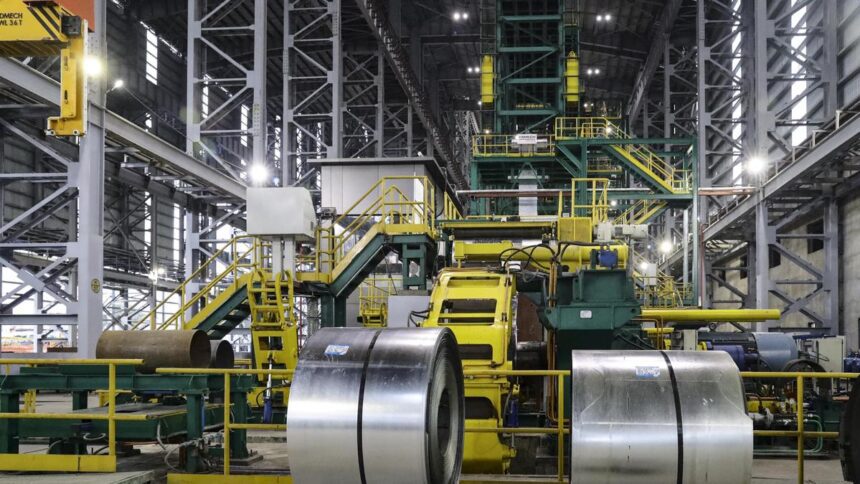Global steel production nose dived 5.9 per cent to 143.3 million tonne (mt) in October, 20255. It was 152.1 mt a year ago.
According to the World Steel Association, the biggest producer China’s output decreased a whooping 12.1 per cent y-o-y to 72 mt in the period under consideration. In the period between January and October, the country produced 817.9 mt of steel, recording a drop of 3.9 per cent. India, however, recorded an increase in production at 13.6 mt, up 5.9 per cent in October. The US also saw its figures rising at 9.4 per cent to 7 mt. Meanwhile, Japan and Russia had a dip in steel production at 1 per cent to 6.9 mt and 6.2 per cent to 5.3 mt, respectively.
South Korean output, too, slipped, going down 5.8 per cent to 5.1 mt. Türkiye’s saw an output drop at 3.1 per cent to 3.2 mt and Germany’s production plummeted to 3.1 mt, down 3 per cent. Brazil steel production went south by 2.7 per cent at 3.0 mt. Iran produced 3.3 mt of steel in October, up 12 per cent.
Region-wise, Africa’s October steel output was at 2 mt — an increase of 0.8 per cent when compared to October 2024. Asia and Oceania produced recorded a decrease of 8.2 per cent at 102.4 mt and the EU (27) produced 10.8 mt of steel, down 3.5 per cent. Europe (others) output went down by 3.8 per cent to 3.6 mt. The Middle East produced about 5.4 mt, up 9.2 per cent. North America recorded a 4.7 per cent hike in the output to 9.1 mt. Russia & other CIS + Ukraine produced 6.4 mt of steel, down 5.1 per cent while South America’s output dropped by 1.1 per cent at 3.7 mt.
Sustainability report
In a different development, the World Steel Organisation has expanded its sustainability indicators to 19 from 8, bridging the gap between the Sustainability Principles and performance reporting. The new parameters include renewable energy consumption, SOx emissions intensity, NOx emissions intensity, Dust emissions intensity, fresh water withdrawal, fresh water consumption and so on.
According to the Sustainability Indicators Report 2025, in 2025, data were collected from 93 steel companies and associations, representing 959.5 million tonne, or 51 per cent of global crude steel production.
GHG emissions intensity in 2025 was recorded at 2.18 tonne CO2e per tonne of crude steel. CO2 emissions intensity was flat at 1.92 tonne CO2 per tonne of crude steel when compared with 2024.
In 2024, on average, every tonne of steel produced led to the emission of 2.18 tonne of CO2e. In the same year, 1,886 million tonne (mt) of steel were produced, and total emissions from the sector were of the order of 4.1 billion tonne CO2e (75 per cent of which are direct emissions). These emissions represent 7 per cent–8 per cent of global anthropogenic GHG emissions.
Also, 14 steel organisations were recognised as Sustainability Champions in 2025. Tata Steel and Tenaris have achieved this recognition for eight consecutive years since the programme’s launch in 2018.
Published on November 24, 2025










